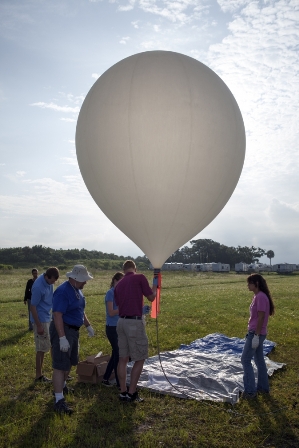
At NASA’s Kennedy Space Center in Florida, a high attitude balloon parachuted was recently released for Rocket University engineers and designers who are now going to conduct some important experiments.
For this, an instrument box weighing about five pounds was tied with the weather balloon. This instrument package was released from 65,000 feet. A recovery crew was waiting for the parachute at the ocean. The parachute cannot be steered but the recovery crew could predict with the help of a computer model where actually the payload of the balloon is. Nicole Dawkins, a Kennedy engineer at this moment said:
“We now feel ready for more challenging payloads and relieved because we didn’t want to move forward until we got this capability taken care of.”
It was the effort of NASA to push the managers and engineers in the fields which were totally new for them. This is done so that they are able to get knowledge of areas outside their specialties. At first, the flights were not a big success because when the command was given the balloon was not separated from the payload package. This was one of the most daring tasks and it certainly takes time for the crew to achieve success, but at last they were finally able to celebrate their victory.
Dawkins said: “The team has met their objective of predicting where the payload will land once it’s released from the balloon. It’s always a simple thing that you never think is going to get you. When they have a failure, we don’t just go back the next day. We talk about lessons learned and redesign and peer review. We really work it over as well as we can.”
The team after completing this task was really excited and decided to conduct future tasks with even more challenging payloads. The team next summer is decided to conduct another project using a high-attitude balloon.
“As long as we keep challenging participants and bring in new participants, I think this is a really good step for Rocket University’s near-space environments curriculum,” Dawkins said.